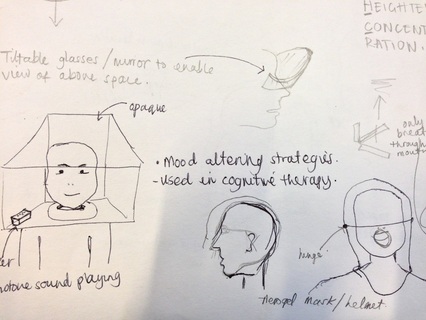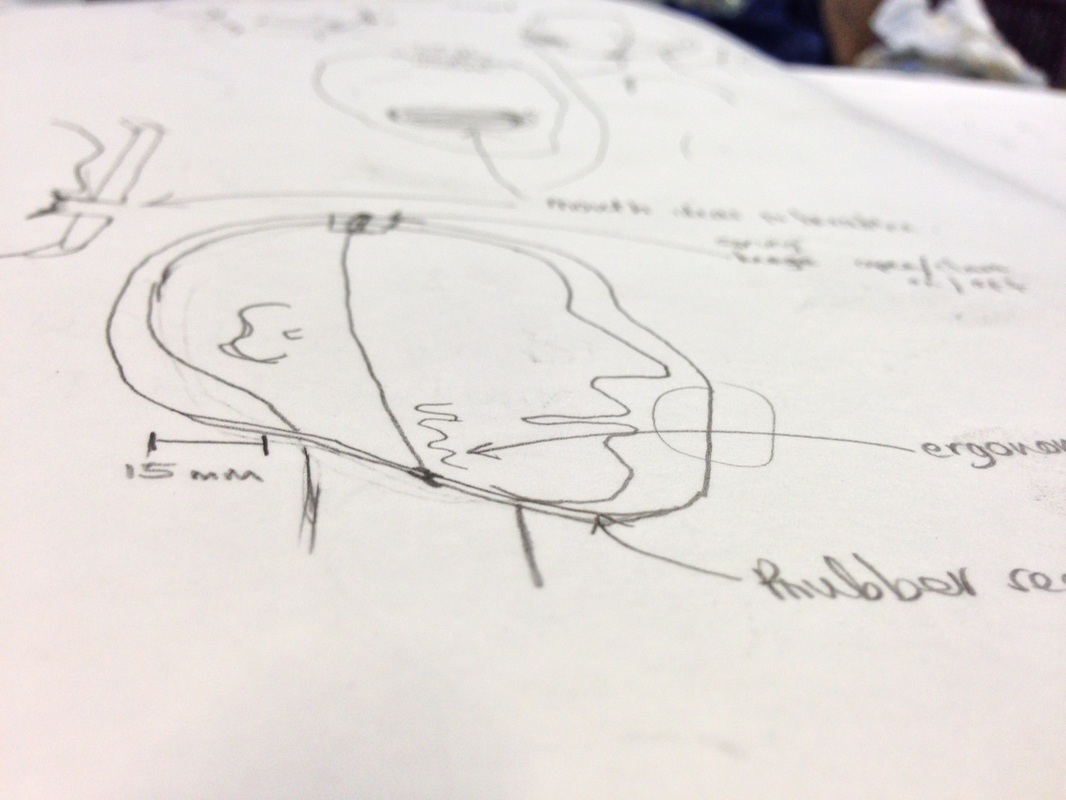We started to think about ideas for implementing aerogel with our concept ideas.

To the right is a picture of some of the ideas we had for designing a prototype. We had ideas ranging from encasing the head within a large box to wrapping it tightly against the skin.
We toyed with ideas of having speakers in the prosthesis to emit sound to the wearer as well. This could be used to enhance the user's perception of sound, or even to use sound to change the mood. The sounds can be used to create a specific atmosphere within the prosthesis for the wearer.
We also thought about different ways to put the prosthesis on and take it off. For example, it can be hinged to allow access in a similar way to a visor. Alternatively it can have straps which attach around the back of the head, crossing over to secure the prosthesis in place.
We toyed with ideas of having speakers in the prosthesis to emit sound to the wearer as well. This could be used to enhance the user's perception of sound, or even to use sound to change the mood. The sounds can be used to create a specific atmosphere within the prosthesis for the wearer.
We also thought about different ways to put the prosthesis on and take it off. For example, it can be hinged to allow access in a similar way to a visor. Alternatively it can have straps which attach around the back of the head, crossing over to secure the prosthesis in place.
The image below shows the idea which came out on top from our initial ideas. It is a helmet which fits to the face, but not tight to it. It has enough space around it that the user is not in full contact with it, it sits comfortably around the head approximately 15mm from the skin. It is constructed from aerogel and is hinged at the top to allow it to open, almost like a clamshell. We decided that there should be rubber or foam around the edges so that it is comfortable on the places of the body that the helmet does touch. It should go no lower than the chin, so as to allow for full movement of the head without the helmet touching the neck. The helmet should also have ergonomically moulded places on the sides for ease of removal. There will also be space cut out around the mouth to enable the user to breathe.
| The image below shows the idea which came out on top from our initial ideas. It is a helmet which fits to the face, but not tight to it. It has enough space around it that the user is not in full contact with it, it sits comfortably around the head approximately 15mm from the skin. It is constructed from aerogel and is hinged at the top to allow it to open, almost like a clamshell. We decided that there should be rubber or foam around the edges so that it is comfortable on the places of the body that the helmet does touch. It should go no lower than the chin, so as to allow for full movement of the head without the helmet touching the neck. The helmet should also have ergonomically moulded places on the sides for ease of removal. There should also be space cut out around the mouth to enable the user to breathe. | "There should also be space cut out around the mouth to enable the user to breathe." |

 RSS Feed
RSS Feed